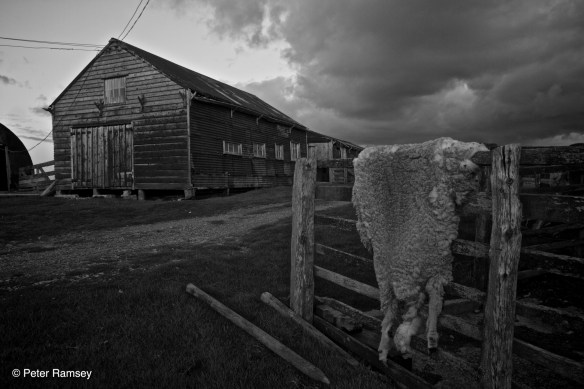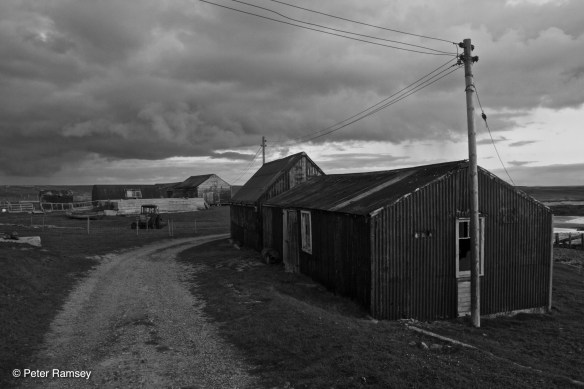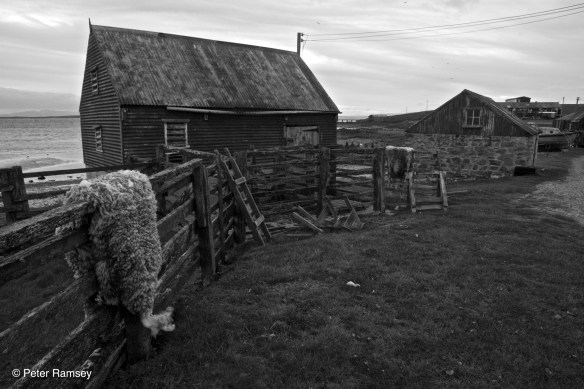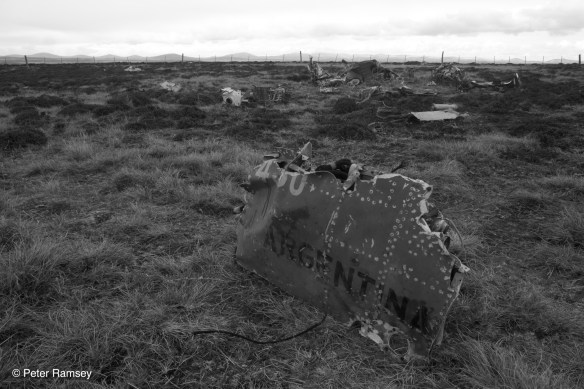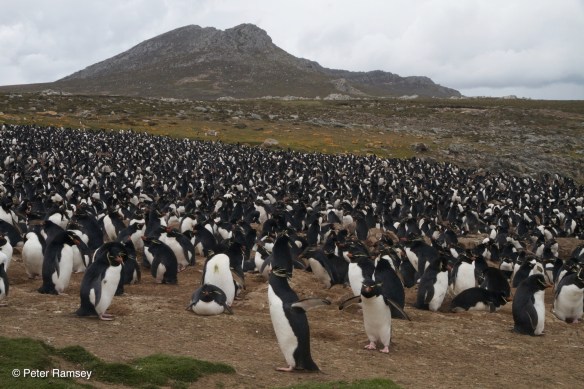After a bit of a break from writing up my Falklands trip, I thought I would publish a few more blog posts over the coming weeks – the first one about Pebble Island.
Pebble was the first of the offshore islands I stayed on during my trip and it certainly has a bit of everything; scenery, history and wildlife. In fact, I would say, from what I have seen elsewhere, it is the Falklands in miniature. The island has mountains and long sandy beaches with turquoise seas, a human history made more vivid by the events of 1982 and wildlife in abundance.
Pebble is the eastern-most of the larger islands off the north coast of West Falkland. It’s a big island with an area of 88 square km, 30km long and just less than 10km across at its widest and you would struggle to walk it in a day. It has a very small population, mostly comprising the owner and staff of the tourist hotel (Pebble Island Lodge).
Like most of the Falkland Islands, Pebble is an odd shape with an indented coastline and some wide open bays, it has rocky cliffs and large swathes of open diddle-dee heath. The rugged and hilly west of the island is very different to the lower lying and marshy east and the two larger landmasses that make up the island are joined by a narrow isthmus on which sits the only settlement. The main landing strips sit just to the west of the settlement up a small rise towards the first of the three hills on the island, conveniently named First Mountain – the others being Middle Mountain and Marble Mountain. I visited the beach where there were once tonnes of semi-precious pebbles (after which the island is named) but after over-exploitation, there are very few left and I didn’t see a single one.
The population was once much bigger, with the settlement being larger than the current handful of residents need. It is a typical Falklands village with too many buildings for the present population, many appear semi-abandoned, but the buildings that are used are in good repair and cared for. The old farm buildings down by the jetties are particularly spectacular in their deteriorating stark and rustic charm and lit an interest in me to capture images of these places around the other islands I visited.
The war had a particular impact on Pebble as, unlike the majority of the offshore islands, it had a significant Argentine presence and it was used as a forward operating base for some of their aircraft. Within easy reach of San Carlos Water to the east, the location chosen for the British landings, Pebble and its aircraft were a serious threat to the amphibious task force. To remove this threat, the British special forces mounted a night-time raid which took out 11 aircraft and rendered the landing strip unusable (although it was the Argentines who blew up the strip).
There are also significant signs of the wider war on the island with the debris of two shot down Argentine Dagger aircraft strewn across the land and a memorial to mark the crash site of an Argentine Learjet. High up on First Mountain also stands a cross marking Pebble as the closest land to the final resting place of the British destroyer, HMS Coventry. After successfully taking down numerous Argentine bombers, with her frigate partner HMS Broadsword, she finally succumbed to one of the air raids she had been helping to protect the British bridgehead from.
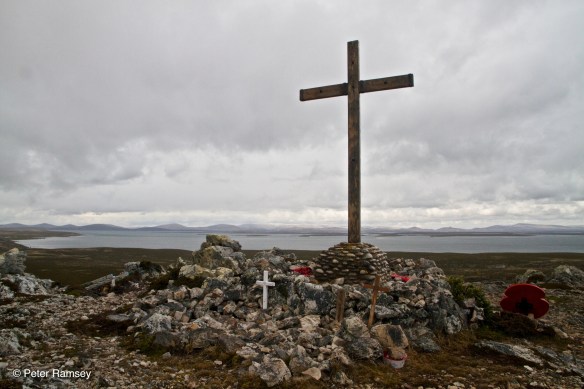
And then there’s the wildlife! The Island has been designated as an Important Bird Area by Birdlife International due to its abundance of avian residents. Pebble was the first place I saw penguins; a nice little group of Gentoos on Elephant Beach on my first afternoon. There are coastal Gentoo colonies but also an inland colony to which the penguins trudge over a kilometre from the coast, while a big Rockhopper colony spreads out above the cliffs where the diminutive birds bounce up and down the steep rock face. There are also a small number of macaronis amongst the Rockhoppers and colonies of Magellanics along the coast. To the east, there are good numbers of wetland birds and, as usual, plenty of geese everywhere and many of the smaller birds that can be found throughout the islands. I saw Commerson’s dolphins surfing the crashing waves coming into one of the wide bays and had a distant view of a sea lion on one of the smaller outlying islands.
The weather while I was there was probably the most changeable of anywhere I stayed, with bright sunny bright blue skies, dark menacing clouds, strong winds, a hail storm and snow showers passing through, all in less than 48hrs.
Like most of the islands, Pebble has a soul all of its own, which is now made most vivid in my memory by the sunset on my first evening. I wandered down to the jetties near to the settlement and walked amongst the old farm buildings. As I moved out onto the beach, a flock of gulls rose into the blustery air against a backdrop of dark brooding clouds broken by the bright light of the setting sun. Out in the distance were many small islands with the mass of hills on the West Falkland mainland standing behind. The wind rushing past couldn’t drown out the angry cries of the birds as they called alarm at the presence of stranger amongst them. The breeze brought rattles, creaks and groans from the resisting buildings while the slowly setting sun picked out the details in the wood and metal walls, roofs and doors. A remoteness seemed to come over me – the emptiness of the view out to the far off islands and hills, the isolation of the once bustling but now quiet settlement and the wildness of the weather and the calls of the gulls – truly spectacular!
With all this to offer, Pebble has to be on my list for a return trip down south.
(My stay on Pebble Island was made all the more special by the people – Riki, Brad, Cat, Leigh and Walter. Pebble Island Lodge is a great place to stay with comfortable accommodation and lovely food! I particularly have to thank Brad for a great day-long tour of the west of the island – my TripAdvisor write-up can be found here)



